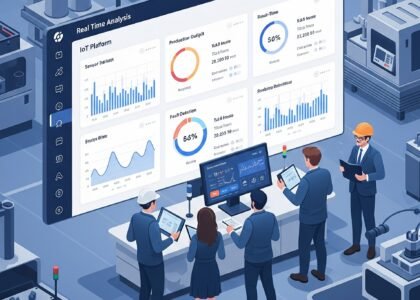With the rapid evolution of communication and semiconductor technologies, businesses are entering a data-driven era where operational efficiency hinges on smart data management. Global data creation is expected to reach 180 zettabytes by 2025, according to IDC, up from 64.2 zettabytes in 2020. Edge devices—compact electronic units positioned at the periphery of cloud-based monitoring and control systems—play a critical role in managing this deluge of data. These devices can collect, process, and act on information in real time, reducing latency from 100+ milliseconds (cloud processing) to under 10 milliseconds at the edge.
The Surge in Edge Device Deployment
The market is witnessing explosive growth in edge device deployment. By 2025, over 75 billion IoT devices are projected to be in use worldwide, many of which operate as edge nodes. This surge supports the global push for automation, responsiveness, and real-time analytics—but it also introduces significant cost challenges. Transmitting raw data from billions of devices to centralized cloud systems contributes to soaring operational expenses.
To put it in perspective, data egress fees can cost up to $0.09 per GB for cloud providers like AWS. For a system transmitting 100 TB of data monthly, that’s $9,000 in egress fees alone, excluding storage and processing costs.
Edge Computing as a Cost-Saving Strategy
Edge computing is emerging as a powerful solution. By processing data closer to its source, companies can reduce the volume of data sent to the cloud by up to 90%, according to McKinsey. This local processing includes filtering, compression, and analytics—often powered by micro AI models that require just 100 KB to 2 MB of memory to operate, compared to cloud-based models that can exceed hundreds of megabytes.
This approach can reduce bandwidth usage by up to 85% and cloud storage costs by 40–60%, especially in scenarios with high-frequency sensor data or video feeds.
Trade-Offs and System Design Considerations
However, distributing intelligence across devices isn’t without its trade-offs. Edge devices now need to support increasingly complex operations. This results in a 30–50% increase in power consumption per device, especially when running continuous AI inference workloads. Consequently, more robust hardware—featuring multi-core processors, GPUs, or dedicated NPUs—is required, raising the unit cost of edge devices from $25–$50 (basic sensors) to $150–$300+ (AI-capable edge units).
This makes total cost of ownership (TCO) a critical consideration. Maintenance frequency, firmware updates, and device lifespan all factor into long-term edge strategy.
Staying Competitive in a Fast-Moving Market
Staying ahead in the edge computing race means staying agile. With more than $80 billion invested globally in semiconductor R&D in 2023, chipmakers are rolling out new protocols and hardware innovations like Wi-Fi 6E, 5G NR-Light, and RISC-V based microcontrollers designed for edge use cases. Forward-thinking architects must continuously evaluate and integrate these advancements to build systems that are both future-proof and cost-effective.







